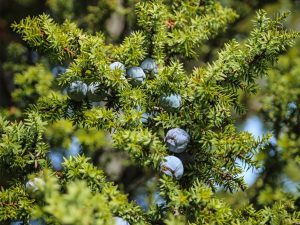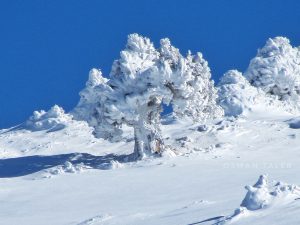
A SURVIVOR WAS BORN THEY CALLED IT #JUNIPER
- June 28, 2020
- 0
Cover image: Khaled TalebLebanon’s other tree
Juniperus also known as “Lezzeb” in Lebanon is an evergreen conifer that grows at high altitudes from 1000m to 2900m on Mount Lebanon and AntiLebanon mountain chains. Being a hotspot for biodiversity, Lebanon is also a hotspot for junipers with five species; Juniperus excelsa, J. foetidissima, J. polycarpos, J. drupacea, J. oxycedrus. On the Lebanese mountains, J. excelsa and J. oxycedrus are the most represented, followed by J. drupacea. Whereas, J. polycarpos and J. foetidissima are very rare with two populations identified till our days. This fact increases our responsibility as Lebanese to enhance our vigilant protection towards our junipers and ban any tree cut. Especially, that Juniper identification is challenging in the field, particularly for Juniperus excelsa, J. foetidissima, J. polycarpos which are highly similar morphologically.

Juniper trees are considered as one of the most important features of the Lebanese forests by founding an important integrated natural system. Indeed, its rooting system which grows vertically and laterally protects the soil from erosion and interacts with the soil microorganisms. In addition, they are the home and nutriment source for many birds and animals. The importance of Juniper is not limited just to ecology, but also, those trees have high medical benefits. Indeed, for several centuries, juniper leaves, berries and essential oils have been utilized for medical services such as treatment of cold, rheumatism, microbial and fungus infections. Lately, it has been shown that extracts of J. foetidissima have anticancer activities and potentially act for the prevention of diabetes. This is the genus of records among Conifers!!
More than any conifer, Junipers have high tolerance to harsh environments such as drought, extreme high and low temperatures and low nutriment substrate. Those qualities helped junipers to conquer a wide range of habitats. Indeed, Junipers live in places where no other tree dares to live in! We note Junipers on the highest altitudes and on the harshest cliffs. Furthermore, those trees are unique among conifers having berrylike and colorful female cones which attract mammals and birds, helping the seed’s dispersal over long distances. Moreover, they have high longevity that could extend to 1500 years. Can you imagine how many hikers and shepherds a Juniper meets during its life?! How many animals have been fed and accommodated by just one juniper? Can you imagine how many snowy winter and droughty summer seasons they survived? How many fires and pests attack a juniper fights during its life? Indeed, it is not easy to be a juniper and particularly a Juniper in Lebanon where numerous threats (Environmental and human activities) exist. Interestingly, in the frame of my doctorate thesis accomplished at Saint Joseph University of Beirut (Lebanon) and Paris Sud University (France), studying genetic characteristics of Juniperus, we found that some species of Juniper double or triple their complete set of DNA such as the Lebanese J. foetidissima. This means that instead of holding as an example one gene responsible for cold temperature adaptation they hold 2 or 3 copies of this same gene. This feature is exceptional comparing to other conifers and might be one of the important reasons giving juniper trees their high adaptation to extreme environmental factors. Being the Unknown Soldier for many years for the Lebanese wildlife, it is time to shed the light on junipers and to increase the awareness to protect and plant more of those trees in our high mountains. Finally, after attributing many human characteristics to animals like the “beauty of eyes” to the cows, the “fidelity” to dogs, the “power” to the horse, let’s attribute the “fighter and survivor” to a Juniper “Be a survivor like Junipers!”

Article: Perla Farhat, PhD in ecology and plant genetics











